
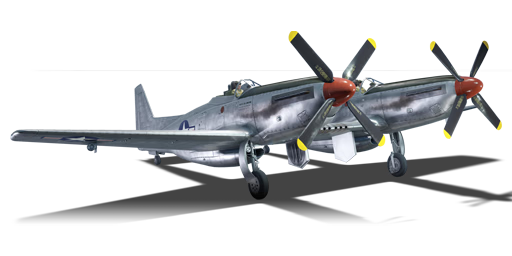


To combat the issue of single-pilot fighters flying long combat missions, the United States Army Air Force (USAAF) proposed a two-seat, double-engine version of the Mustang. The idea was proposed in 1943 and one year later the USAAF ordered two XP-82s. The XP-82 was essentially two P-51H fuselages fused together. The first two prototypes had the standard Packard Merlin engine which produced 1,860 hp. However, concerns grew with Packard's ability to produce more Merlin engines and the Allison engine had developed into a decent powerplant. This was compounded by the fact that Rolls-Royce was significantly increasing the price of the Merlin engine. By this time, the Allison engines could perform sufficiently at high altitudes and could produce almost 2,000 horsepower at sea level thanks to the water-methanol injection system. Around 96 F-82Es were delivered with the Allison V-1710-143/145 engines.
Introduced in Update 1.39, the F-82E is an iconic aircraft that lives up to expectations. It's extremely fast with a top speed of 742 km/h (463 mph) and a high structural limit of 854 km/h (531 mph). The F-82E was intended to escort the B-29 and thus was fitted with six M3 Browning machine guns mounted in the center of the airframe. An additional gunpod can be mounted in the center which provides an additional eight M2 Browning machine guns. The gunpod is quite draggy and for optimal performance shouldn't be used. For ground attacking though, the gunpod is an excellent option due to its ample ammunition pool. The F-82E can also carry bombs and rockets.
flaps
flaps
flaps
brake
| Belt | Belt filling | Armor penetration (mm) at a distance: | |||||
|---|---|---|---|---|---|---|---|
| 10 m | 100 m | 500 m | 1000 m | 1500 m | 2000 m | ||
| API-T/AP/AP/I | 30 | 27 | 20 | 13 | 9 | 6 | |
| AP-I/AP-I/API-T/I/I | 28 | 26 | 18 | 11 | 7 | 4 | |
| API-T/I/AP/AP/AP-I/AP-I | 30 | 27 | 20 | 13 | 9 | 6 | |
| API-T | 28 | 26 | 18 | 11 | 7 | 4 | |
| AP-I/I/AP-I/I | 28 | 26 | 18 | 11 | 7 | 4 | |
| Name | Weight | Slot | ||||
|---|---|---|---|---|---|---|
| 5 × | 326 kg | 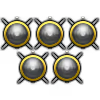 |  |  |  |  |
| 242.6 kg |  |  | ||||
| 500.8 kg |  |  | ||||
| 2 × | 485.2 kg | 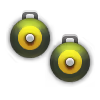 | ||||
| 2 × | 1,001.5 kg | 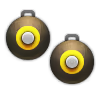 | ||||
| 2 × | 1,992.6 kg | 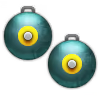 | ||||
| 8 × | 953.9 kg | 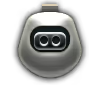 | ||||












Flight performance | ||
|---|---|---|
Survivability |
|---|
Weaponry | ||
|---|---|---|